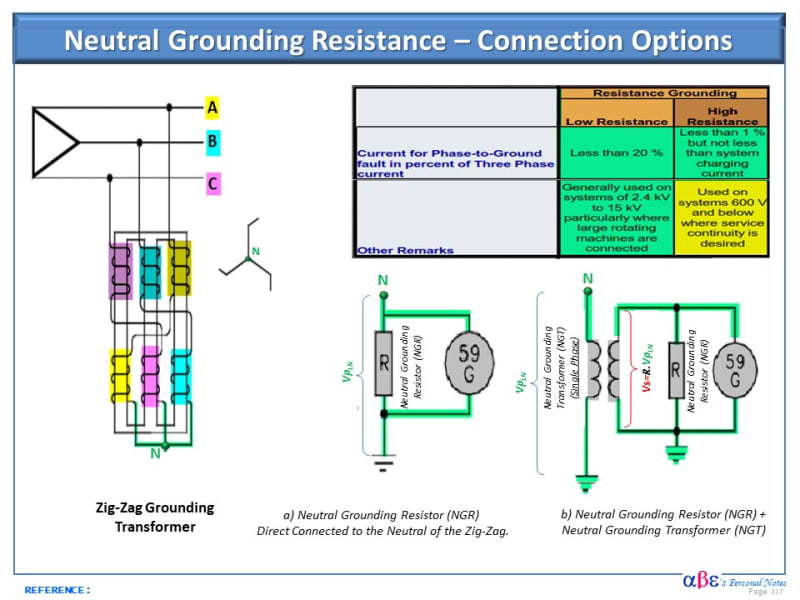You forgot to make mention of one other possibility, directly connecting a neutral inductor to the Wye point of the main power transformer winding. This is frequently done by utilities to reduce the single line to ground available fault current while still allowing the transformer to remain effectively grounded such that it can support single phase transformers connected between phase and ground/neutral. Typical sizes range from 1/4 ohm all the way up to 2 ohms for very large transformers such as 100MVA top rated.
A typical example is if you are trying to limit the fault current for fusible cutouts to around 12kA asymmetrical, in a substation with an 50.4/67.2/84 MVA 26.4kV transformer, say with 10.5% impedance and transmission about 25kA available at 138kV, you would have a 3-phase symmetrical fault current of around 10,000A and adding a 1/2 ohm neutral reactor that would get your single line to ground of about 7,500A symmetrical, 12,000A asymmetrical. In this way you could easily apply commonly rated 27kV 12kA rated cutouts to transformers and cable circuits knowing that the cutout will be able to interrupt a single 16,000A asymmetrical (10,000A sym) 3-phase fault with replacement of the fuse tube and link and will interrupt 3 times at 12kA replacing the link only. 3-phase faults are much more rare than single line to ground so this gives a good margin of protection without needing more expensive overcurrent devices.
You will also need to keep in mind how having a neutral reactor will change your earth fault currents if you are doing ground or neutral relaying.
As others have mentioned using resistors is much more common on low resistance grounded systems where you are trying to limit the single line to ground fault currents to very small values such as 400A. In this application, you cannot connect any loads between phase to ground as you are no longer effectively grounded. You will also need to make use of higher rated surge arrestors as your unfaulted phases will rise close to the phase to phase voltage on a single line to ground fault and you don't want faults to cause your arrestors to spark over.
Both inductors and resistors have duty ratings depending on how many faults they see. So they will become a maintenance item to keep an eye on and will need to replace after so many thru fault operations.

